Cavaliere Paolo Guidotti, also known as il Cavalier Borghese (Lucca, 1559 - 1629) was an Italian painter, sculptor and architect, active in Rome, Lucca, Pisa, Reggio Emilia, Napoli.
Contents

Cavaliere Paolo Guidotti, also known as il Cavalier Borghese (Lucca, 1559 - 1629) was an Italian painter, sculptor and architect, active in Rome, Lucca, Pisa, Reggio Emilia, Napoli.

He was described as having a ingegno bizzarro, brave or whimsical depending on your interpretation, since he claimed to have designed a flying machine, or parachute, but succeeded only in breaking a leg. [1] [2]
Many of his architectural works, completed for Pope Sixtus V have been lost. He completed a series of sculptures for Pope Paul V, who allowed him to adopt the surname Borghese, and made him conservator of the Campidoglio and leader (principe) of the Accademia San Luca. His paintings and frescoes enriched many churches in Rome and Naples. In 1610, after obtaining many appreciations for his innovative works in Palazzo Giustiniani at Bassano Romano, he went back to Lucca. Here he influenced with his works the younger local painters, such as Pietro Paolini, Paolo Biancucci and others. In this period he was also in Reggio Emilia where he frescoed the apse of San Giovanni Evangelista with a Resurrection. In 1618 he returned to Rome, where he stayed till his death (1629). His last work, in St. Peter's Basilica (1628) is now lost.

Somewhat of a polymath, he made the preparations for the ornamentation surrounding the canonization in 1622 of Isidore the Laborer, Ignatius of Loyola, Francis Xavier, Filippo Neri, and Saint Teresa of Ávila. He wrote an epic poem titled Gerusalemme Distrutta, concluding each eighth line with the same words of Gerusalemme liberata . He is said to have traveled to cemeteries at night to examine cadavers for drawing.
His flying apparatus was contrived with whalebone and down feathers, and the episode is described as thus: [3]
But his most extraordinary whim was that of flying. He contrived wings of whalebone in the most ingenious manner, which he covered with down, and giving them sufficient folds by means of springs, joined them under his arms; and having made a number of trials in private, determined at length to make a public exhibition. He ascended from one of the eminencies of Lucca, and was carried for about a quarter of a mile; but his wings not being able to support him any longer, he fell through a roof into a chamber, and broke his thigh. Giambatista Dante, of Perugia, had also the same whim, and the same fate. Oliver of Malmesbury, an English Benedictine, and good mechanic, in 1060, Bacville, a Jesuit of Padua, a Theatine of Paris, and a number of others, have all been thus desirous of soaring into the regions of air, and have all been equally successful. This, however, cannot be properly termed flying, but only an easier and slower method of falling. A flight can only be applied to the feat of the Padre Andrea Grimaldi of Civitavecchia, who returned from the East Indies with a wonderful machine of his own invention, in the form of an eagle; seated across which he was borne from Calais to London, 1751, making seven leagues an hour, directing his flight either higher or lower, as he pleased. This fact is most seriously recorded in the "Modern History." It is possible that posterity may consider this invention much to our honour.
.
Francesco Milizia goes on to conclude that had Guidotti not attached himself to so many things, he might have been a good artist...he was, it may be supposed, singular in his thoughts and reasoning. [3]
It is said a contemporary, Giovanni Battista Danti, attempted a similar stunt circa 1488 in Perugia.

Antonio Allegri da Correggio, usually known as just Correggio was an Italian Renaissance painter who was the foremost painter of the Parma school of the High Renaissance, who was responsible for some of the most vigorous and sensuous works of the sixteenth century. In his use of dynamic composition, illusionistic perspective and dramatic foreshortening, Correggio prefigured the Baroque art of the seventeenth century and the Rococo art of the eighteenth century. He is considered a master of chiaroscuro.
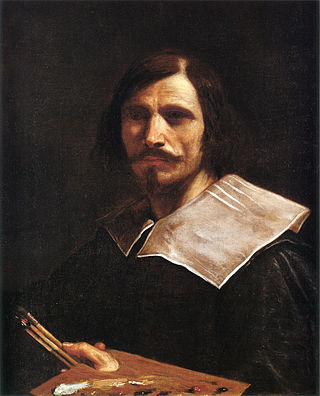
Giovanni Francesco Barbieri, better known as (il) Guercino, was an Italian Baroque painter and draftsman from Cento in the Emilia region, who was active in Rome and Bologna. The vigorous naturalism of his early manner contrasts with the classical equilibrium of his later works. His many drawings are noted for their luminosity and lively style.

Guido Reni was an Italian painter of the Baroque period, although his works showed a classical manner, similar to Simon Vouet, Nicolas Poussin, and Philippe de Champaigne. He painted primarily religious works, but also mythological and allegorical subjects. Active in Rome, Naples, and his native Bologna, he became the dominant figure in the Bolognese School that emerged under the influence of the Carracci.

The Galleria Borghese is an art gallery in Rome, Italy, housed in the former Villa Borghese Pinciana. At the outset, the gallery building was integrated with its gardens, but nowadays the Villa Borghese gardens are considered a separate tourist attraction. The Galleria Borghese houses a substantial part of the Borghese Collection of paintings, sculpture and antiquities, begun by Cardinal Scipione Borghese, the nephew of Pope Paul V. The building was constructed by the architect Flaminio Ponzio, developing sketches by Scipione Borghese himself, who used it as a villa suburbana, a country villa at the edge of Rome.

Pietro Perugino, an Italian Renaissance painter of the Umbrian school, developed some of the qualities that found classic expression in the High Renaissance. Raphael became his most famous pupil.
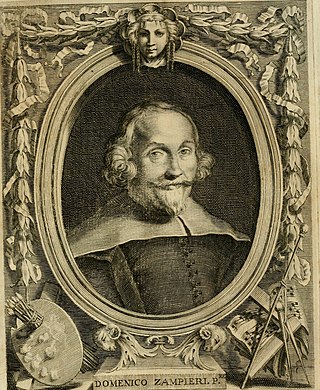
Domenico Zampieri, known by the diminutive Domenichino after his shortness, was an Italian Baroque painter of the Bolognese School of painters.
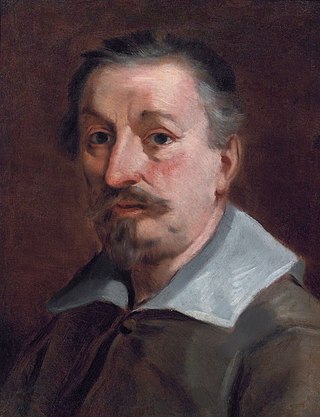
Francesco Albani or Albano was an Italian Baroque painter of Albanian origin who was active in Bologna, Rome, Viterbo (1609–1610), Mantua (1621–1622) and Florence (1633).

Andrea Sacchi was an Italian painter of High Baroque Classicism, active in Rome. A generation of artists who shared his style of art include the painters Nicolas Poussin and Giovanni Battista Passeri, the sculptors Alessandro Algardi and François Duquesnoy, and the contemporary biographer Giovanni Bellori.

The Deposition, also known as the Pala Baglioni, Borghese Entombment or The Entombment, is an oil painting by the Italian High Renaissance painter Raphael. Signed and dated "Raphael. Urbinas. MDVII", the painting is in the Galleria Borghese in Rome. It is the central panel of a larger altarpiece commissioned by Atalanta Baglioni of Perugia in honor of her slain son, Grifonetto Baglioni. Like many works, it shares elements of the common subjects of the Deposition of Christ, the Lamentation of Christ, and the Entombment of Christ. The painting is on wood panel and measures 184 x 176 cm.
Ottaviano Nonni, called Il Mascherino, was an Italian architect, sculptor, and painter born in Bologna. Apprentice of Giacomo Barozzi da Vignola, he was active in Emilia and in Rome, where he had been living in the rione of Borgo, in the road still bearing his name.
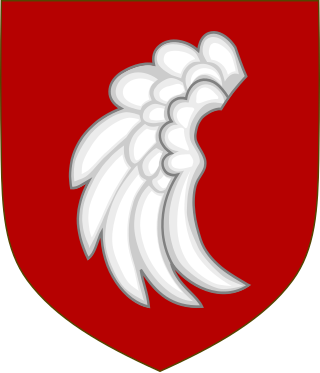
Bonifazio Bevilacqua Aldobrandini was an Italian Cardinal. He was the uncle of Pope Gregory XIV.
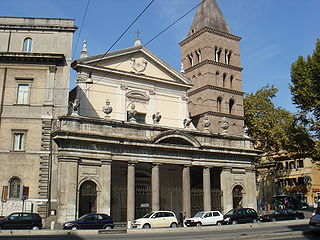
San Crisogono is a church in Rome dedicated to the martyr Saint Chrysogonus. It was one of the tituli, the first parish churches of Rome, and was probably built in the 4th century under Pope Sylvester I (314–335).

The Tempio della Beata Vergine della Ghiara, also known as Basilica della Madonna della Ghiara, is a church in Reggio Emilia, northern Italy. The building is the property of the comune (municipality) of the city.

The Basilica dei Santi Bonifacio e(d) Alessio is a basilica, rectory church served by the Somaschans, and titular church for a cardinal-priest on the Aventine Hill in the third prefecture of central Rome, Italy.

Cesare Nebbia (c.1536–c.1614) was an Italian Mannerist painter from Orvieto.

Lazzaro Baldi was an Italian painter and engraver of the Baroque period active mainly in Rome.

The Diocese of Reggio Emilia–Guastalla is a Latin diocese of the Catholic Church in Emilia-Romagna, Italy. It has existed in its current form since 1986. In that year the historical Diocese of Reggio Emilia was united with the Diocese of Guastalla. The diocese is a suffragan of the Archdiocese of Modena–Nonantola.
The former Italian Catholic Diocese of Città della Pieve, in Umbria, existed until 1986. In that year it was united into the Archdiocese of Perugia-Città della Pieve.
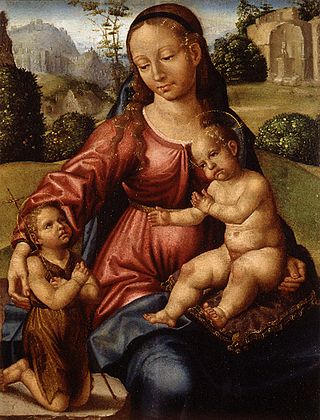
Pablo da San Leocadio or Paolo da Reggio was an Italian painter from Reggio Emilia, who was mostly active in Spain.